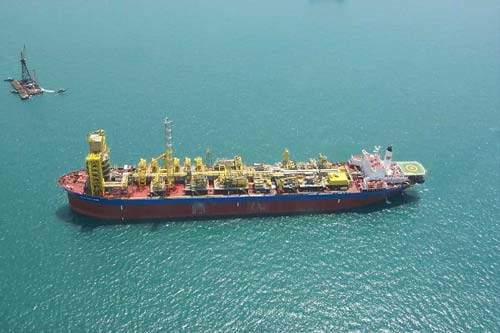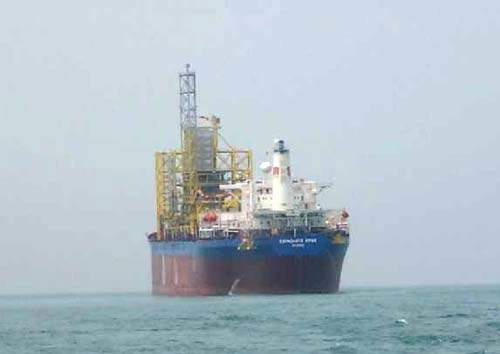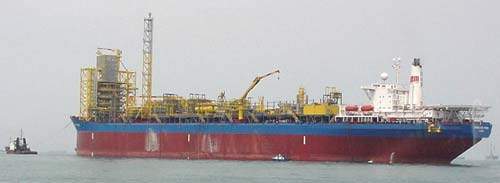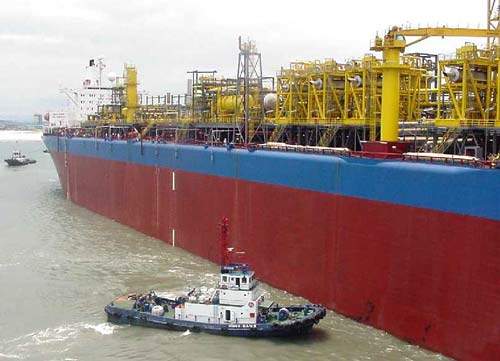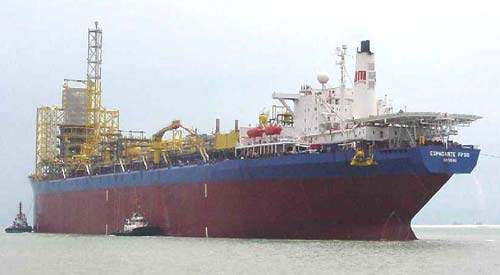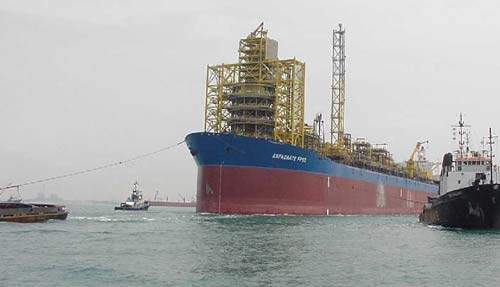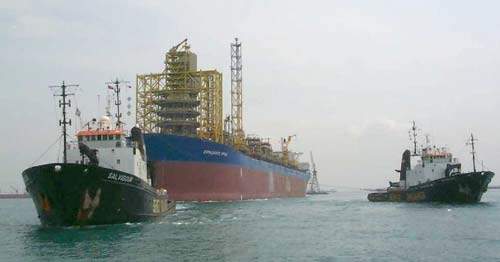Espadarte is located in the Campos Basin, off the shore of Brazil.
It lies to the east of Bonito and Bicudo, to the South of Marimba and to the east of Caratinga, in a water depth of 800m to 940m.
Espadarte is being developed by an FPSO, supplied by SBM.
The field life has been estimated at 13 years and has been developed using eight water injection wells and nine oil and gas wells.
Development
The Keppel shipyard in Singapore carried out the conversion of the FPSO VI for Espadarte.
The FPSO VI started life as the monohull tanker called Berge Pilot, which was converted at Astano in Cadiz, for Ashland, Nigeria, to produce the Ebughu, Akam and Adanga fields.
Under the contract, Keppel removed the existing oil-processing utility systems and replaced these with new oil, water and gas-production and treatment facilities on the main deck.
The company also refurbished the boilers for the gas and diesel oil system, as well as installing a flare tower, a helideck, supply handling deck cranes, foundations, walkways, lighting communications and utilities for various deck facilities.
Espadarte FPSO
The Espadarte FPSO measures 344m in length and has a beam of 52m, a depth of 29m and a draught of 22m.
The oil storage capacity is 1.9m barrels (bbl) and it has a tonnage of 285,000dwt. The operator specified that the facilities should be designed around an oil production capacity of 100,000 barrels a day (b/d) and 50,000b/d of produced water.
To do this, it has to treat / compress 88 million cubic feet a day of gas for gas lift and export, and inject 110,000b/d of water.
The FPSO topsides process system was designed by Gusto. The company based the layout on 17 separate modules, located along a central piperack system.
Once these were installed, the moonpool was located and the turret was fitted into the vessel’s bow.
The turret was built in Abu Dhabi. It is 30m-high, 17m-wide and weighs over 1,000t.
It is designed to accommodate up to 45 flexible risers, including umbilicals and electrical cables.
The swivel stack includes:
- One 12in water injection flowline
- One 14in oil production flowline
- One 10in fire water flowline
- One 8in production test flowline
- Two 6in gas lift / export flowlines
- Two electric (power and control) flowlines
- Two hydraulic / utilities flowlines
Processing
The primary and secondary separation of oil, gas and water is carried out in modules one and two. Separated oil is stored in the cargo tanks prior to offloading.
The separated water is then cleaned before being discharged overboard. Gas is compressed in modules four to seven.
It is then fed back, through the turret, for subsequent re-injection into production wells, for artificial lift. Any surplus gas not used for fuel is fed to the shore.
Power generation is carried out in module 12 by two 4.4MW gas turbines. Power is distributed by a switching gear situated in module 13, and in a forward equipment room in the forecastle of the vessel.
Seawater is pumped through the heat exchangers on module 11 to a fine filtration system, then to a vacuum tower to remove all traces of oxygen.
A gas turbine water-injection pump routes the water back through the turret swivels, at a high pressure, for re-injection.
Module 14 contains chemical storage and pumping equipment, while module 16 houses flare gas scrubbers and the subsea well hydraulic power unit.
Mooring
The FPSO is moored to the seabed by 32t anchors, connected to the turret by ten chain / polyester rope lines.
Weathervaning is permitted by two bearings, one at the top, the other at the turret’s base.
Swivels at the top of the structure divert the incoming commingled wellstream to the topsides separation and process modules.
High-pressure gas from the compressors is dehydrated.
Offloading is carried out using a tandem hose arrangement, to a shuttle tanker moored at the FPSO’s stern.
This 24-hour offloading operation is carried out every ten days. The dual-carcass hoses, selected for this environmentally sensitive area, are 150m in length.

